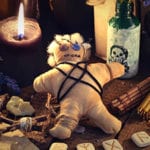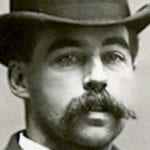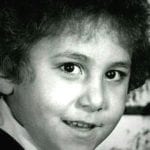 Mysteries
Mysteries  Mysteries
Mysteries  History
History 10 Surprising Stories About the Texas Rangers
 Humans
Humans 10 Philosophers Who Were Driven Mad by Their Own Theories
 Miscellaneous
Miscellaneous 10 Video-Game-Worthy Weapons and Armors from History
 Weird Stuff
Weird Stuff 10 Psychics Who Accurately Predicted Wartime Events
 The Arts
The Arts 10 Pieces of Art Inspired by a Broken Heart
 Health
Health 10 Science Fiction-Sounding New Medical Treatments
 History
History 10 Surprising Facts About the Father of Submarine Warfare
 Space
Space Ten Astonishing New Insights into Alien Worlds
 Weird Stuff
Weird Stuff 10 Bizarre Summer Solstice Rituals Still Practiced Today
 Mysteries
Mysteries Top 10 Haunting Facts About the Ghost Ship MV Alta
 History
History 10 Surprising Stories About the Texas Rangers
 Humans
Humans 10 Philosophers Who Were Driven Mad by Their Own Theories
Who's Behind Listverse?

Jamie Frater
Head Editor
Jamie founded Listverse due to an insatiable desire to share fascinating, obscure, and bizarre facts. He has been a guest speaker on numerous national radio and television stations and is a five time published author.
More About Us Miscellaneous
Miscellaneous 10 Video-Game-Worthy Weapons and Armors from History
 Weird Stuff
Weird Stuff 10 Psychics Who Accurately Predicted Wartime Events
 The Arts
The Arts 10 Pieces of Art Inspired by a Broken Heart
 Health
Health 10 Science Fiction-Sounding New Medical Treatments
 History
History 10 Surprising Facts About the Father of Submarine Warfare
 Space
Space Ten Astonishing New Insights into Alien Worlds
 Weird Stuff
Weird Stuff 10 Bizarre Summer Solstice Rituals Still Practiced Today
Top 10 Young Killers
A number of child killings have been recorded throughout the years. These often have involved disturbing acts one can hardly imagine a child suffering through. These cases are becoming more controversial as the number of child killings increases every year. However, what happens if that innocent and vulnerable-looking child is the one responsible for the abduction and murders in your neighborhood? Would you believe the accusations made of someone so young? Could a child really commit such crimes? These are not your typical childish crimes of stealing toys from a friend, or bullying a schoolmate. This is the list for the top 10 young killers. There is a small amount of overlap from the list of evil children, for the sake of including people that really do deserve to be on this list.
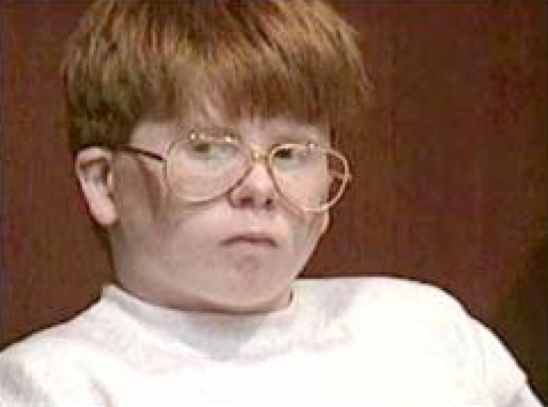
“You may think I’m a threat to the well-being of society. And I can understand why you would feel that way. The fact is that I’m not. I’d be an asset to society.”
At 13, Eric Smith was bullied because of his thick glasses, freckles, long red hair and one other quality: He had protruding, elongated ears. These were believed to be a side effect of medicine his mother had taken for her epilepsy when she was pregnant. Police charged Smith with the murder of a four-year-old boy named Derrick Robie. The younger child had been strangled, had large rocks dropped on his head, and had been sodomized with a small stick. When asked why he did it, Smith cannot give a definite answer. A psychiatrist diagnosed Smith with intermittent explosive disorder, a condition in which a person cannot control inner rage. Smith was convicted and went to prison. As of today, he’s been in prison for six years and has been denied parole five times.
Get a closer look at the disturbed mind of a killer with Serial Killers: The Method and Madness of Monsters at Amazon.com!

“There should be a sensitivity to the fact that a 14-year-old is not a little adult.” – Florida Governor Jeb Bush
What started as a regular room cleaning ended with the conviction of a 14-year-old boy named Joshua Phillips. His mother went to clean up his room one morning after Phillips left for school. Mrs. Phillips noticed a wet spot under her son’s bed and thought it was a leak from his waterbed. As she was investigating the bed to see if it needed to be drained, she found electrical tape holding the frame together. She thought her son had known the about leak but didn’t want to get into trouble. She removed enough tape to discover her son’s sock underneath, but she was surprised to feel something cold. The beam of her flashlight showed her the dead body of Maddie Clifton, an 8-year-old neighbor who had been missing for seven days.
People in the community, especially the boy’s parents, could hardly believe he could have killed Clifton. Phillips was one of the neighbors who had volunteered to search for the missing girl. Because he was under 16, Phillips did not qualify for the death penalty. He was convicted and sentenced to life imprisonment, with no possibility of being freed. To this day, Phillips has not stated his motives for killing Clifton. He said he accidentally hit her in the eye with a baseball bat, and then dragged her to his room where he hit and stabbed her, but the jury did not believe his story.
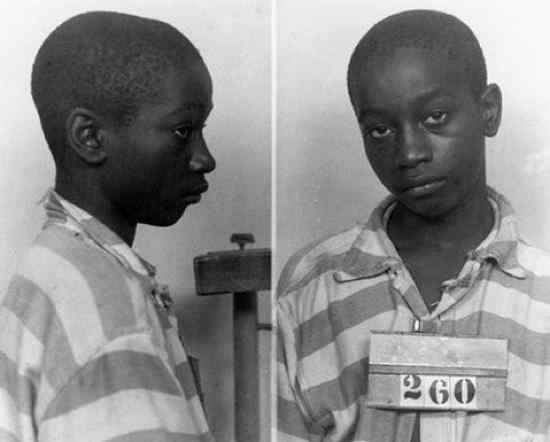 Note: In December 2014, Stinney was exonerated on the basis that his confession was coerced and that he was wrongfully convicted without a fair trial.
Note: In December 2014, Stinney was exonerated on the basis that his confession was coerced and that he was wrongfully convicted without a fair trial.
On June 16, 1944, the United States set a record when they executed George Stinney (14 years old), the youngest person to be legally executed in the US during the twentieth century. George was convicted of the murder of two girls named Betty June Binnicker (11) and Mary Emma Thames (8) who were both found in a muddy hole. The girls suffered severe fractures to their skulls, inflicted by a railroad spike found some distance from the town. George confessed to the crime and said that he wanted to have sex with Betty but ended up killing the girls. He was tried and sentenced to death in the electric chair; the case was not appealed because his family had no money to pay for a continuation.

“I was imitating the professional wrestlers”
What might be thought of as a regular TV wrestling match led to the death of a six-year-old girl named Tiffany Eunick. Kathleen Grossett-Tate was trusted to babysit Tiffany and brought her over to her house one evening. She left Tiffany with her son Lionel, age 14, to watch the television when she went upstairs. Around 10 p.m., she yelled at the children to be quiet, but didn’t check what the noise was about, thinking that they were just playing. Forty-five minutes later, Lionel called to his mother and told her that the girl was not breathing. He explained that they had been wrestling and he had her in a headlock as he slammed her on the table.
Authorities were called and a medical examiner reported that the cause of death was due to forceful stomping that lacerated Tiffany’s liver. Aside from that, experts testified that the girl suffered a fractured skull and rib, swelling in the brain from a beating that lasted from one to five minutes, and 35 other injuries. Tate changed his statement later and said that he jumped on her from the staircase. Tate was sentenced to a lifetime of imprisonment without parole in 2001, but his sentence was overturned on the basis that he was not given a mental competency hearing before, or during, the trial. He was released in 2004 with 10 years’ probation.
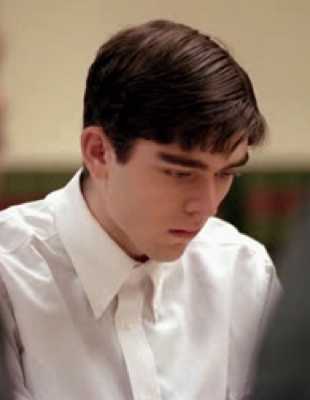
“This sure beats algebra, doesn’t it?”
On February 2, 1996, the Frontier Middle School was devastated by a hostage-taking incident and shooting spree that occurred in an algebra class. It took the lives of three people (two students and a teacher) and resulted in the critical injury of one student. The person accused was a 14-year-old boy named Barry Dale Loukaitis, who was experiencing delusional and messianic thoughts before the shooting. Barry was dressed to look like a gunslinger from the Wild West in a black duster, and armed with a .30-30 caliber rifle, a .357 caliber pistol and a .25 caliber pistol that belonged to his father. The students were held hostage for 10 minutes before a gym coach tricked and outwitted the boy.
It was believed that, aside from a history of mental illness and dysfunctional issues in his family, Barry was influenced by Pearl Jam’s song and video “Jeremy.” The video shows a troubled youth committing suicide in front of his classmates and teacher. It was also reported that he said “This sure beats algebra, doesn’t it?” when he saw his classmates panic. This is a quote from a Stephen King novel, Rage, in which the protagonist kills two teachers and takes his algebra class hostage. Barry is currently serving two life sentences, with an additional 205 years in prison.
![Craig Price Picture[2]](https://listverse.com/wp-content/uploads/2011/05/craig-price-picture2.jpg)
“As far as the girls go, it was my utmost intention to let them live.”
Joan Heaton (39), along with her two daughters, Jennifer (10) and Melissa (8), were found lifeless, blood-soaked and brutally murdered in their home on September 4, 1989. They were stabbed so fiercely that the knife broke off in Melissa’s neck. Police reported that Joan had approximately 60 stab wounds, while the young girls had approximately 30. The authorities believed that burglary was the suspect’s main motive; the knife used was from the Heaton’s kitchen and the women had possibly caught the suspect and fought against him. It was also believed that the burglar must have been someone from the Heaton’s neighborhood, who would have obtained a cut or wound in the hand, due to the force and number of times the victims were stabbed.
Craig was spotted by the police with a bandage on his hand, but said that he had smashed a car’s window. The police did not believe his story. They investigated him and charged him after finding the knife, gloves and other bloody items when they searched Craig’s room. He admitted to the crime and to another murder that had taken place in the neighborhood two years earlier. The authorities already suspected him as the murderer in that case, which was similar to Heaton’s and had started as burglary. Craig was tried and convicted before his 16th birthday, and is still in jail.

“It grew on me like a drug habit, except it was not me who was taking the drugs.”
At an early age, Graham Young had been fascinated with chemistry, particularly types of poison and their effects on people. His other great interest was idolizing murderers such as Dr. Hawley Crippen, William Palmer, Adolf Hitler and others. Young started experimenting with poisons when he was 14. He usually lied about his age, and explained that a given poison was for a school experiment so he could buy the chemicals he needed. His family and friends were his victims. His father, upon becoming ill, originally thought he just had a virus of some sort. Then the apparent illness struck his wife and daughter. All suffered from continuous vomiting, diarrhea and stomach pains. In 1962, the mother of Young’s stepmother died from poisoning.
At 14, Young already had the expertise of a postgraduate chemistry student, all self-learned through library books. He sometimes became a victim of his own poisoning when he forgot on which foods he had placed his toxic chemicals. Young was caught when his teacher inspected his desk one evening after school, suspicious about the odd experiments Young was suggesting to the class. The teacher found poisons, essays about famous prisoners, and sketches of dying men. These revelations led him to call the police. Young was sent to a maximum security hospital, but this did not stop him from poisoning hospital staff and fellow inmates (one of whom died). His knowledge was so broad that he could extract cyanide from laurel bush leaves. Young was released when he was 23 and went to live with his sister. His poisoning spree continued—his victims most often were coworkers. Young was sent back to prison and eventually died there.
Start your 30 day free trial of Amazon Prime Instant Video! Start Free Trial Now at Amazon.com!
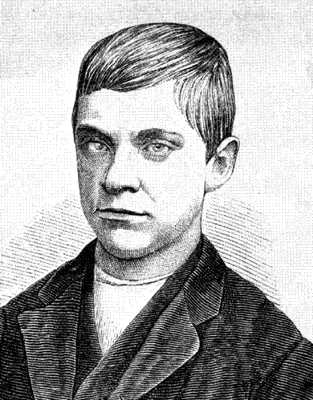
“I might have done it.”
Jesse Pomeroy, born on November 29, 1859, in Charlestown, Massachusetts, was referred to as the youngest person convicted of murder, in the first degree, in the history of the Commonwealth of Massachusetts. Pomeroy started his cruel acts against other children when he was 11. He had taken and trapped seven children in a hidden spot where he would strip, tie and torture them, by using a knife or by poking pins into their flesh. He was caught and sent to a reform school, where he was supposed to stay until he was 21, but was released after a year and a half for good behavior.
After three years, he had changed from bad to worse. He kidnapped and killed a 10 year old girl, named Katie Curran, and was also accused of the murder of a four year old boy, whose mutilated body was found in Dorchester Bay. Although there is a lack of evidence that can conclusively link Pomeroy to the little boy’s death, he was convicted for the death of Katie when the police found her body in the basement of Pomeroy’s mother’s dress shop, where it was carelessly left in an ash heap. He was sentenced to life imprisonment, which he served in solitary confinement; he died of natural causes at the age of 72.
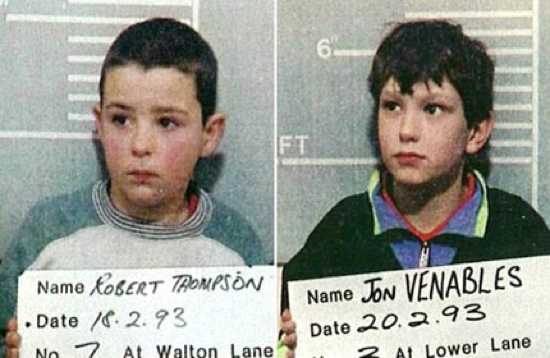
“All little boys are nice until they get older.” – Robert Thompson
James Bulger’s mother left her two-year-old son at the butcher shop’s door thinking that it would not take her long to return, since there was no queue in the store. Little did she know that it would be her last time she would see her son alive.
Jon and Robert, who were at the same mall as the Bulgers, were participating in their usual activities: skipping class, browsing the stores, pocketing things when the salespeople turned their backs, and climbing chairs in the restaurants until they were chased out. The boys came up with an idea to have a little boy get lost outside so that he would get knocked over by a vehicle. It was reported that the boys had a similar previous attempt on a boy before James, which failed because the mother had become aware of her missing child and found him before they could take him outside.
During their two-mile walk, the 10-year-old boys had punched, kicked, picked up and dropped James on his head. Some of the acts were seen by passersby who ignored them, thinking that they were just two older brothers who didn’t know how to take care of their younger brother. Jon and Robert brought James onto the local railway, where they flung paint in his left eye, threw stones at him, beat him with bricks, and hit him with an iron bar. They also sexually assaulted him and laid his body on the railroad track, covering his bleeding head with bricks when they thought he was dead. It was reported that James died sometime before the train hit him.

“Murder isn’t that bad; we all die sometime anyway.”
Brian Howe was found dead and covered with purple weeds and grass, days after the death of Martin Brown who died of asphyxiation. His hair was cut away, puncture marks were found on his thighs, and his genitals were partially skinned. Apart from these marks and injuries, a letter “M” had been imprinted on his stomach. This was originally an “N,” but Mary added a line to make it look like an “M.” The three-year-old boy had been strangled to death. When the investigation narrowed down to Mary Bell, she implicated herself by describing in detail a pair of broken scissors—which was confidential evidence—that had been played with by an 8-year-old boy whom Brian was allegedly with, according to Bell.
Mary’s family background may be responsible for her unusual behavior. She thought for a long time that her father was Billy Bell, a habitual criminal who had been arrested for armed robbery, but her biological father is unknown to this day. Mary claimed that her mother, Betty, who was a prostitute, had forced her to engage in sexual acts with men—particularly her mother’s clients—at the age of four. Mary ended up at an all-boys facility after her trial; she was too young to be held in prison and too dangerous to be kept in an unequipped mental hospital or an institution that housed troubled children. Her mother repeatedly sold Mary’s story to the press at the time of her daughter’s conviction. Mary was only 11 at that time. She was released after 23 years and fought and won the case for both her own anonymity and that of her daughter. This order is consequently known as a Mary Bell Order.


